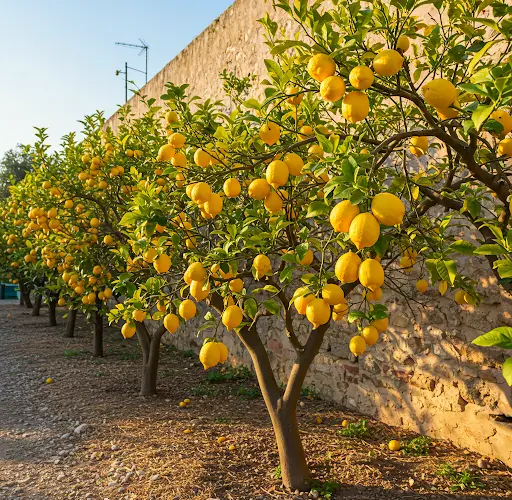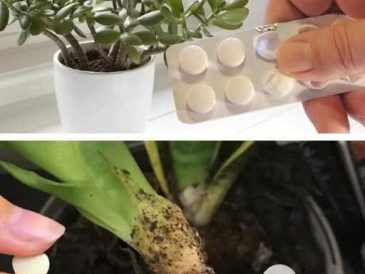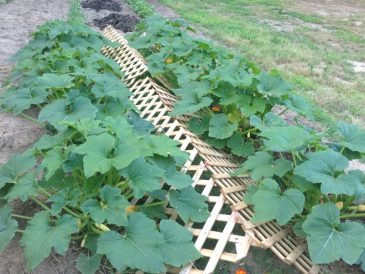How to Cultivate Lemon Trees with Natural Hormones: A Simple and Profitable Method
Lemon trees are among the most versatile and rewarding fruit trees to grow. They thrive in a range of climates, offer fragrant blooms, and produce fruit year-round in the right conditions. Beyond their culinary uses, lemons are also in high demand across various industries—making lemon cultivation a potentially lucrative venture for home gardeners and small-scale farmers alike.
This article outlines a natural, low-cost method to propagate lemon trees using garlic, aloe vera, banana, and sand. With proper care and consistency, you can grow healthy lemon trees from cuttings and multiply your plantation—possibly turning your backyard into a profitable mini-orchard.
The Power of Natural Rooting Hormones
Commercial rooting powders and gels are commonly used to encourage root development in cuttings, but natural alternatives can be just as effective—without the cost or chemicals. This method relies on the natural rooting hormones and antibacterial properties found in:
- Garlic: Rich in sulfur and antimicrobial compounds, garlic helps prevent bacterial and fungal infections while stimulating early root formation.
- Aloe Vera: Known for its healing and hydrating properties, aloe vera gel is also a natural rooting aid packed with enzymes and minerals.
- Banana: This fruit contains natural auxins and cytokinins—plant hormones that accelerate root growth and promote vigorous development.
Combined with clean sand as a growing medium, this technique provides an optimal environment for lemon cuttings to develop strong roots within a short time.
Materials Needed
- Healthy lemon branch cuttings (8–12 cm in length)
- 2–3 garlic cloves
- 1 banana (ripe)
- One large aloe vera leaf
- Clean, coarse sand
- Small planting containers or seed trays
- A sharp knife or pruning shears
- Spray bottle or watering can
- A shaded area or greenhouse space
Step-by-Step Lemon Propagation Guide
1. Prepare the Lemon Cuttings
Choose a healthy, disease-free lemon tree and cut a few branches, each about 8–12 cm long. Make sure each cutting includes at least one node, which is the area where roots and new shoots will emerge. Remove any leaves to reduce moisture loss and focus the plant’s energy on root development.
Using a clean, sharp knife or pruning shears, make a diagonal cut at the base of each cutting to increase the surface area for absorbing nutrients and rooting hormones.
2. Create the Natural Hormone Mix
Garlic Extract: Crush 2–3 garlic cloves and mix with a small amount of water. Stir and let it sit for a few minutes. This extract will act as a natural disinfectant and stimulate root formation.
Banana Paste: Peel a ripe banana and mash the flesh until smooth. Bananas are full of potassium and growth hormones essential for early root development.
Aloe Vera Gel: Slice open a large aloe vera leaf and scoop out the gel using a spoon. Aloe vera keeps the cutting moist and nourished while protecting it from rot and bacterial infections.
Combine the three ingredients in a bowl to make a nutrient-rich rooting mixture. You can soak the base of each cutting in this solution for about 15–20 minutes before planting.
3. Prepare the Planting Medium
Fill seed trays or small pots with clean, coarse sand. Sand is ideal because it provides excellent drainage, preventing root rot and encouraging strong, deep root growth. Moisten the sand slightly before planting.
4. Plant the Cuttings
After soaking in the natural hormone mixture, insert each lemon cutting about halfway into the sand. Firm the sand around the base to ensure stability.
5. Provide Proper Care
Place the containers in a shaded area that receives bright, indirect sunlight. Water the cuttings at least twice a day, once in the morning and once in the late afternoon, to maintain consistent moisture levels. A spray bottle works well to gently mist the soil without disturbing the cuttings.
6. Monitor Growth Progress
After around 26 days, you should start to see significant progress. Healthy white roots will begin to emerge from the base of the cuttings, and small green shoots may appear. This indicates that the cutting has successfully rooted and is transitioning into a young lemon tree.
7. Transplant and Grow
Once the roots are about 2–3 inches long, the lemon cuttings are ready for transplanting into larger pots or directly into nutrient-rich soil in the garden. Be sure to harden them off by gradually introducing them to more sunlight over several days.
Continue to water regularly and fertilize occasionally with organic compost or citrus-specific fertilizer. With proper care, your young lemon trees will thrive and begin fruiting in just a couple of years.
Conclusion
With nothing more than a few household ingredients—garlic, aloe vera, banana, and sand—you can propagate lemon trees naturally and affordably. This method not only supports sustainable gardening practices but also opens the door to potential income through small-scale lemon farming.
Whether you’re looking to add more citrus trees to your backyard or dream of turning your garden into a thriving lemon orchard, this technique offers a simple and effective path to success. Start with a few cuttings, care for them consistently, and watch as your lemon trees flourish—bringing in fresh fruit and future profits.



